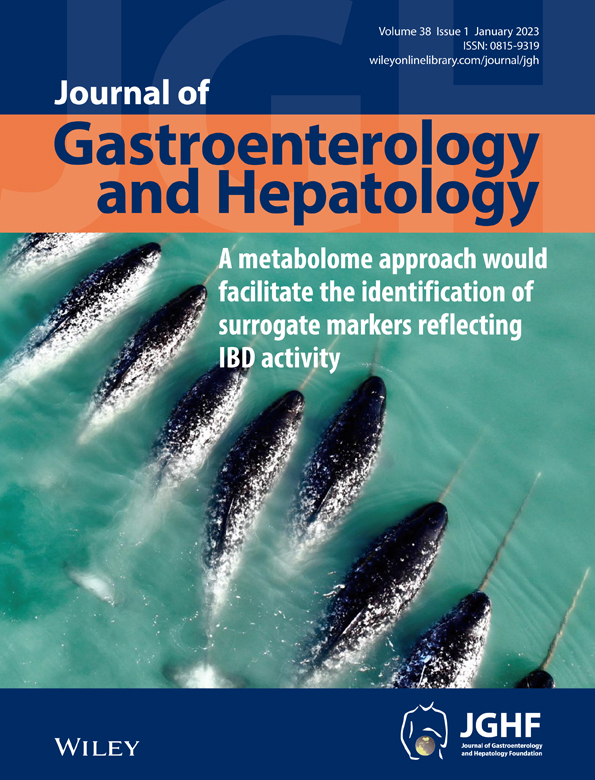Magnifying endoscopy with narrow-band imaging for diagnosis of subtype of gastric intestinal metaplasia
Declaration of conflict of interest: Kenshi Yao received technical advisory fees from Olympus Medical Systems; Noriya Uedo received lecture and educational event fees from Olympus Medical Systems; other authors have no potential conflict of interest to disclose related to this study.
Author contributions: Conception and design: N. U., T. K.; acquisition of data: T. K., S. N., T. O., R. H., K. I., K. O., Y. O., M. M., H. T., A. O., and A. I.; analysis and interpretation of data: N. U.; drafting of the manuscript: T. K., N. U.; critical revision of the manuscript: T. K., N. U., K. Y.; statistical analysis: N. U.; study supervision: K. Y., T. U. All authors listed have contributed substantially to the study design, data collection and analysis, and editing of the manuscript.
Abstract
Background and Aim
Patients with incomplete gastric intestinal metaplasia (GIM) have a higher risk of gastric cancer (GC) than those with complete GIM. We aimed to clarify whether micromucosal patterns of GIM in magnifying endoscopy with narrow-band imaging (M-NBI) were useful for diagnosis of incomplete GIM.
Methods
We enrolled patients with a history of endoscopic resection of GC or detailed inspection for suspicious or definite GC. The antrum greater curvature and corpus lesser curvature were regions of interest. Areas with endoscopic findings of light blue crest and/or white opaque substance (WOS) were defined as endoscopic GIM, and subsequent M-NBI was applied. Micromucosal patterns were classified into Foveola and Groove types, and targeted biopsies were performed on GIM with each pattern. GIM was classified into complete and incomplete types using mucin (MUC)2, MUC5AC, MUC6, and CD10 immunohistochemical staining. The primary endpoint was the association between micromucosal pattern and histological subtype. The secondary endpoint was endoscopic findings associated with incomplete GIM.
Results
We analyzed 98 patients with 156 GIMs. Univariate analysis (odds ratio [OR] 3.4, P = 0.004), but not multivariate analysis (OR 0.87, P = 0.822), demonstrated a significant association between micromucosal pattern and subtype. The antrum (OR 3.7, P = 0.006) and WOS (OR 43, P = 0.002) were independent predictors for incomplete GIM. The WOS had 69% sensitivity and 93% specificity.
Conclusions
The M-NBI micromucosal pattern is not useful for diagnosis of GIM subtype. WOS is a promising endoscopic indicator for diagnosis of incomplete GIM. (UMIN-CTR000041119).




